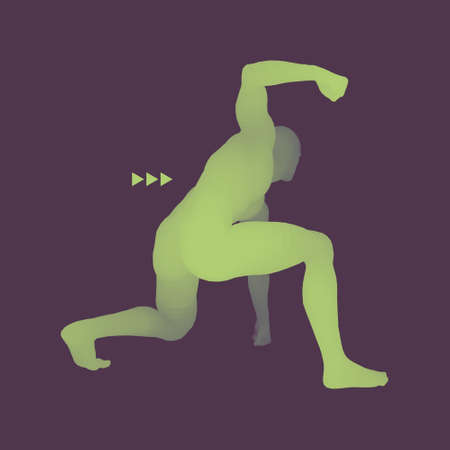1. Introduction: The Importance of Stretching for UK Hillwalkers
Hillwalking across the diverse landscapes of the UK, from the rugged Scottish Highlands to the rolling fells of the Lake District and the windswept moors of Yorkshire, presents both breathtaking scenery and a unique set of physical demands. Unlike gentle countryside rambles, British hillwalks often involve steep ascents, uneven ground, boggy patches, and unpredictable weather—all of which test your endurance, balance, and flexibility. For those who regularly tackle these trails, targeted stretching is not just a warm-up formality but an essential part of preparation and recovery. Effective stretching routines help prevent common injuries such as strained calves, tight hamstrings, and sore lower backs, while also improving mobility and resilience on challenging terrain. In this article, we’ll explore why stretching matters so much for UK hillwalkers and how adopting a few key routines can keep you moving comfortably from misty valleys to windswept summits.
Essential Pre-Walk Warm-Up Stretches
Preparing for a day’s hillwalking in the UK requires more than just lacing up your boots and checking the weather. A proper warm-up is crucial for both resilience and injury prevention, especially given the varied and often challenging British terrain. Focusing on dynamic mobility exercises tailored to the hillwalker’s needs, these routines can help you move freely from the first step and stave off common strains associated with uneven ground and long ascents.
Why Dynamic Mobility Matters
Dynamic stretches—unlike static holds—actively prepare your muscles, joints, and connective tissues for the demands of British hills. By mimicking the movements you’ll use on the trail, these routines increase blood flow, lubricate joints, and enhance your body’s readiness to adapt to changing gradients and surfaces.
Recommended UK-Style Warm-Up Routine
| Stretch/Movement | Description | Duration/Repetitions |
|---|---|---|
| Leg Swings (front to back) | Swing each leg forward and backward, keeping your core engaged for balance. | 10–15 reps per leg |
| Hip Circles | With hands on hips, make large circles to mobilise hip joints. | 10 circles each direction |
| Lunge with Rotation | Step into a lunge, then twist your torso gently towards your front knee. | 8–10 reps per side |
| Ankle Rolls | Lift one foot off the ground and rotate your ankle slowly in both directions. | 10 rolls each way per ankle |
| Knee Hugs to Calf Raise | Pull one knee towards your chest, then rise onto your toes as you release. | 8–10 reps per leg |
| Arm Circles (for pole users) | Extend arms out to sides; make small then large circles forward and backward. | 10 circles each direction |
Tips for UK Conditions
- Adapt for Terrain: If starting on steep or rocky paths typical of British fells, emphasise ankle and hip mobility even further.
- Pace Appropriately: Allow 5–10 minutes for this routine before setting off. Use a sheltered spot if conditions are blustery or wet.
- Add Movement Gradually: Begin at a gentle pace and increase intensity as your body warms up—this mirrors how many seasoned UK hillwalkers ease into their day’s effort.
![]()
3. Mid-Walk Mobility: Stretches to Do on the Trail
When trekking across the UK’s hills, it’s essential to prioritise mobility throughout your walk, not just at the start or end. Busy paths, unpredictable weather, and limited space mean hillwalkers need stretches that are simple, discreet, and adaptable to pit stops or summits. Here are UK-style stretches designed for those brief pauses—whether you’re sheltering behind a dry stone wall or waiting for mates to catch up.
Standing Calf Stretch
Find a solid surface such as a rock or a sturdy fence post. Stand upright and place one foot forward while keeping your back leg straight and heel grounded. Lean gently into the front knee until you feel a stretch along your back calf. Hold for 10–15 seconds per side. This is particularly useful after ascending steep inclines common in the Lake District or Scottish Highlands.
Quad Stretch with Balance
Standing tall, use a trekking pole or gate for balance. Grab your ankle behind you and gently draw your heel towards your backside. Keep knees together and hips facing forward. Hold each side for 15 seconds. This stretch helps counteract fatigue from constant climbing over undulating British fells.
Hip Opener Step-Through
From standing, raise one knee to hip height and rotate it outward in a circular motion before stepping forward. Repeat with the other leg as you progress along the path. This dynamic move can be woven into your walk without breaking stride—ideal on busy rights of way where stopping isn’t practical.
Weather-Proof Shoulder Rolls
Shoulder tension often builds with rucksack straps and cold winds. Shrug your shoulders up towards your ears, roll them back, and release downwards in slow circles. Repeat five times both forwards and backwards. These can be done even when wrapped up against driving rain.
Ankle Circles at Rest Stops
If you pause for a quick breather or snack, take advantage of the moment by lifting one foot off the ground and rotating your ankle in both directions for ten seconds each. This is subtle enough for crowded trig points and helps prevent stiffness during long descents.
Integrating these mid-walk stretches into your routine will help maintain resilience on Britain’s varied hills, whatever the elements throw at you. Remember: flexibility on the trail is just as important as flexibility of mind when navigating our ever-changing landscapes.
4. Post-Walk Recovery Stretches for Resilience
After a demanding day traversing the British hills, proper post-walk stretching is essential for aiding recovery, reducing muscle stiffness, and building the resilience needed for regular hillwalking. Targeted static stretches allow your muscles to relax and lengthen, helping prevent soreness and supporting long-term mobility. Below are key static stretches recommended for UK hillwalkers, structured to address common areas of tension following a strenuous hike.
Essential Static Stretches for Hillwalkers
| Stretch | Target Muscle Group | Instructions | Recommended Hold |
|---|---|---|---|
| Hamstring Stretch | Hamstrings (back of thigh) | Sit on the ground with one leg extended, gently reach towards your toes while keeping your back straight. | 20-30 seconds per leg |
| Quadriceps Stretch | Quadriceps (front of thigh) | Standing upright, pull one foot towards your buttock, keeping knees together and hips forward. | 20-30 seconds per leg |
| Calf Stretch | Calves (back of lower leg) | Face a wall, step one foot back, press heel into the floor with both feet pointing forward. | 20-30 seconds per leg |
| Hip Flexor Stretch | Hip flexors/groin | Kneel on one knee, push hips forward gently until you feel a stretch in the front hip area. | 20-30 seconds per side |
| Lumbar Rotation Stretch | Lower back/obliques | Lying on your back, bend knees and gently rotate them to one side while keeping shoulders on the floor. | 15-20 seconds per side |
| Iliotibial Band Stretch | Outer thigh/knee stabilisers | Cross one leg behind the other standing, lean sideways away from rear leg to stretch outer thigh. | 15-20 seconds per side |
The Importance of Cool Down in British Conditions
The unpredictable British weather means muscles can cool rapidly once you stop moving. Prioritise these stretches as soon as possible after finishing your walk—ideally before you change out of your walking kit or settle down with a cuppa. Cooling down not only prevents unnecessary tightness but also helps reduce the risk of injury over time, allowing you to continue enjoying the fells and moors season after season.
Tactical Tips for Maximum Recovery Benefit:
- Shelter First: If conditions are wet or blustery, find shelter before stretching to avoid chilling your muscles.
- Breathe Deeply: Steady breathing during each stretch will help release tension more effectively.
- Avoid Bouncing: Hold each position steadily without bouncing to prevent strain.
- Pace Yourself: Focus on quality rather than quantity; thorough recovery now supports better performance next time out on the trail.
Nurturing Long-Term Resilience
A consistent post-walk stretching routine is an investment in your hillwalking longevity. By incorporating these UK-style static stretches after every outing, you’ll foster greater flexibility and strength—key attributes for tackling Britain’s rugged landscapes year-round.
5. Staying Safe: Stretching Tips and British Hillwalking Etiquette
Stretching as a group in the great British outdoors is not just about physical preparation—it’s also about maintaining safety, showing respect to fellow walkers, and upholding the traditions that make UK hillwalking unique. Here’s how to approach your pre- and post-walk stretches while observing the best of British etiquette and environmental stewardship.
Group Safety First: Mindful Positioning
When stretching with others, especially on popular trails like those in the Lake District or Scottish Highlands, always gather off the main path. Choose a flat, stable area where you won’t impede other walkers or disturb local wildlife. It’s courteous to form a compact circle and avoid spreading out across the trail, allowing uninterrupted passage for everyone.
Respecting Public Spaces
Many UK hillsides traverse National Trust land, nature reserves, or privately owned rights of way. Always stretch on durable surfaces—such as gravel patches or grassy verges—rather than fragile heather or moss. This helps preserve the landscape for future generations and aligns with the Leave No Trace principles widely respected by British hillwalkers.
Keeping Noise to a Minimum
While stretching can be sociable, keep conversations at a considerate volume, particularly near beauty spots or memorials where others may seek solitude or quiet reflection. A low-key approach is appreciated, reflecting the understated camaraderie common among UK outdoor enthusiasts.
Polite Interaction with Other Walkers
If you’re leading a group stretch near a busy car park or summit trig point, acknowledge other hillwalkers with a friendly “hello” or nod—a hallmark of British walking culture. If space is limited, invite others to join briefly or wait until there’s enough room so as not to inconvenience anyone passing through.
Caring for the Environment
Always check your surroundings before starting your routine: ensure you’re not blocking access to stiles, gates, or signposts. Avoid stretching near livestock or nesting birds—common on upland paths—to prevent unnecessary disturbance. Carry out any litter and encourage your group to leave the area as pristine as you found it.
Final Thoughts on Responsible Stretching
By blending safe stretching practices with classic British hillwalking etiquette, you enhance both your personal resilience and the shared outdoor experience. A little consideration goes a long way in fostering goodwill among walkers and preserving the unique charm of the UK’s treasured trails.
6. Building a Consistent Stretching Routine
Integrating stretching into your hillwalking routine is essential for maintaining resilience and reducing injury risk, particularly given the unique challenges of the UK’s varied terrain and unpredictable weather. To build consistency, treat stretching as an integral part of both your preparation and recovery process, not merely an afterthought.
Pre-Walk Preparation: Making It Habitual
Begin each walk with a short dynamic stretching session to warm up key muscle groups, such as calves, hamstrings, quads, and hip flexors. In the UK, where hillwalks often start in damp or chilly conditions, warming up muscles is especially important to prevent strains. Incorporate these stretches while kitting up at the car park or shelter—this makes it easier to remember and less likely to be skipped.
Post-Walk Recovery: Prioritising Flexibility
After your walk, focus on static stretching to aid muscle recovery and flexibility. If the weather is inclement, consider doing these stretches at home or in a dry indoor space soon after returning. This helps flush out lactic acid and reduces stiffness that can set in after long hours on rocky paths or boggy moorland.
Tailoring Your Routine to the British Hillwalking Calendar
The UK hillwalking calendar ranges from brisk spring rambles to challenging winter ascents. Adjust your routine accordingly: in colder months, dedicate extra time to warm-ups, as muscles are more prone to tightness; during summer’s longer days, use rest stops for mid-walk stretches when safe and practical. For multi-day treks like those in the Lake District or Scottish Highlands, gentle evening stretches in your accommodation can speed up recovery for the next day.
Practical Tips for Consistency
- Set reminders on your phone or walking logbook to prompt pre- and post-walk stretches.
- Share routines with walking companions—group accountability can boost adherence.
- Pack a lightweight mat or towel if you know you’ll want comfort for floor-based stretches outdoors.
- If you’re part of a walking group or club, suggest incorporating group stretches before setting off or after completing a route.
By embedding these stretching routines into your regular hillwalking habits—and adapting them to Britain’s climate and calendar—you’ll enhance both enjoyment and longevity in the hills. A consistent approach will help keep you resilient on the trail whatever the weather throws your way.


